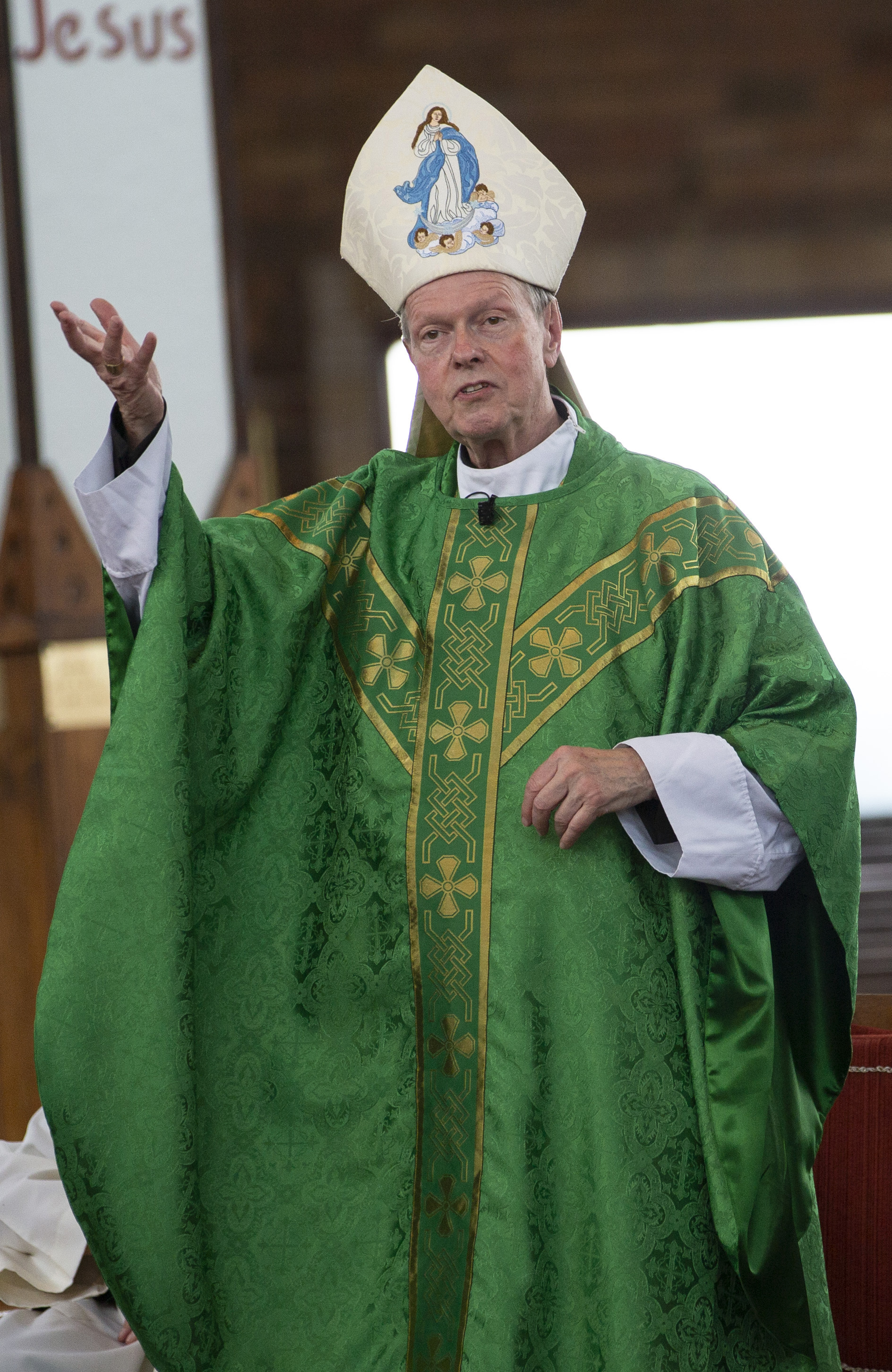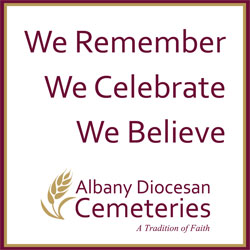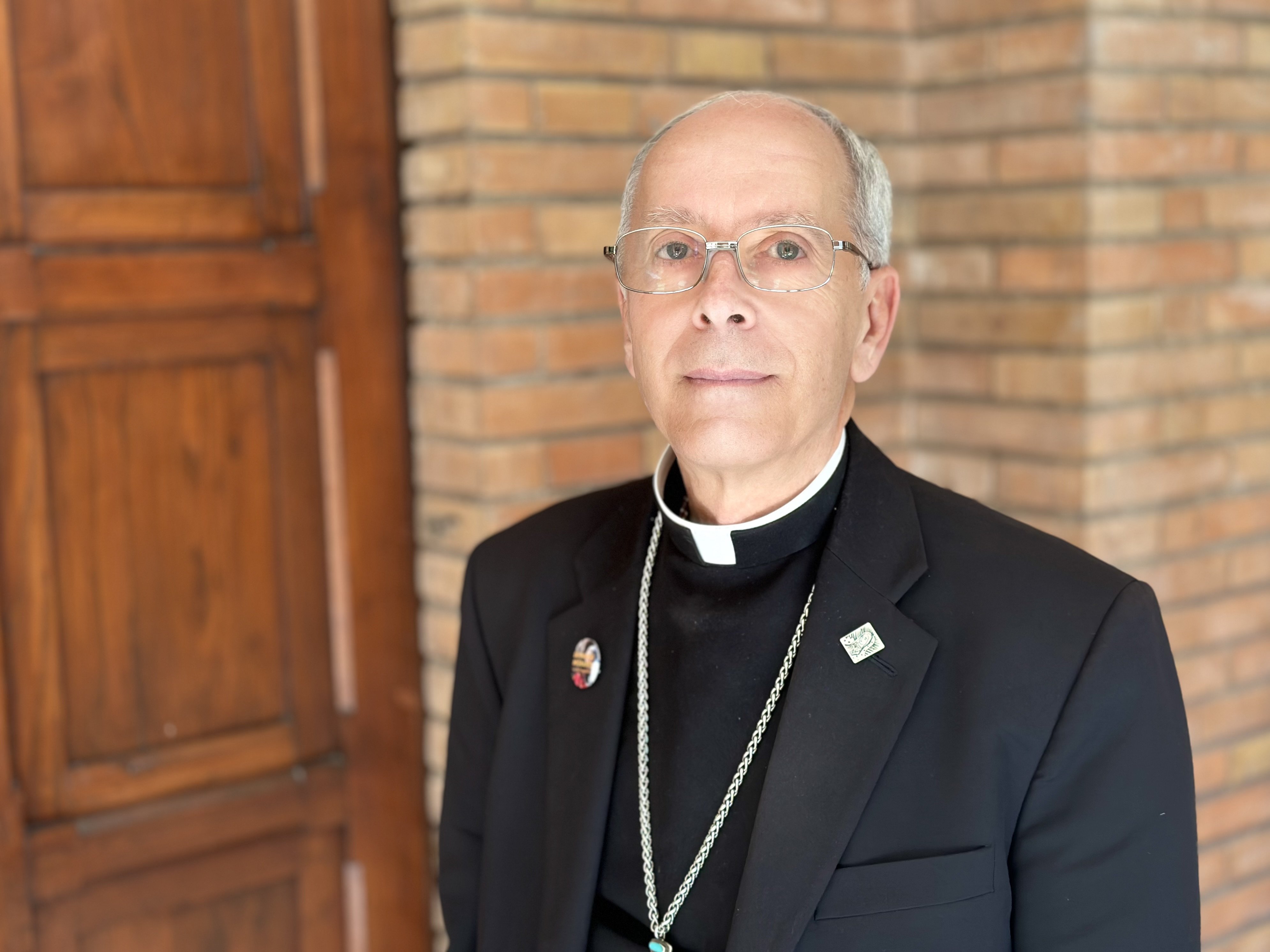November 10, 2020 at 5:28 p.m.
On this Friday morning in late September, I began my journey at 7:45 a.m. sharp.
According to Google Maps, it would take me an hour and 10 minutes to reach Bleecker from Albany. But according to Dave Cummings — the man who initiated the restoration of St. Joseph’s Roman Catholic Shrine and Cemetery, the first Catholic church in Fulton County with its history dating back to the 1850s — the trip would take about an hour and a half.
When I spoke with Cummings — a retired colonel in the U.S. Army and a member and past president of the Saratoga Ancient Order of Hibernians who lives in Schuylerville — on the phone, he instructed me to enter my destination as “Bleecker Town Hall,” then to look for a sign that read, “First Catholic Church.” From that point I should continue for a mile and a half down Old Country Road, then turn left when I see a dirt road. For someone who is notably prone to getting lost — my mother still likes to retell the story of me getting lost in elementary school despite the color-coded tiles placed on the floor — and who was traveling to a new area nestled in the Adirondacks with limited cell service, to say I felt anxious would be an understatement.
Over-caffeinated, I entered the Town of Bleecker. Within 15 minutes the Maps app on my phone blurted out “You have arrived!” But instead of seeing Town Hall, I saw the same open road surrounded by the same tall green trees that I had been seeing for miles, not a building or a town hall in sight.
Deep breathing ensued and I continued straight. Not long after I found Town Hall, feeling rejoiced, I checked my notes: “Look for First Catholic Church.” For about 20 minutes I tried to locate the sign. I had no service to call Cummings’ cell phone and certainly no reception to use my cherished app.
Reluctantly, I turned around and returned to the Town Hall parking lot. The door was locked, but an older man on the other side saw me, opened it and asked who I was looking for. “It’s not a person, but a place,” I said, and asked him if he could help me locate St. Joseph’s Cemetery. Looking bewildered, he invited me inside. When we got into his office he picked up a wireless phone and dialed. After a few moments he said: “Hey, there’s a lady here and she’s talking about roads I’ve never heard of; maybe you can help.” Fortunately, whoever was on the receiving end could help and had heard of the cemetery before.
Wherever the man directed me to, although it was not to the cemetery, it brought me to an area that had service. I scrambled on my phone, now a half an hour late, and found a website with directions on how to reach St. Joseph’s Cemetery, this time equipped with actual street names. I went down Persch Road and took a left at the first dirt road I saw.
Soon after I got a call from Cummings, asking me where I was. Although I had gone down an additional wrong dirt path now, he assured me to keep going down Persch, and to take the next road on the right. I saw his white Cadillac SUV parked at the bottom of the path and knew I made it. Relieved, I parked and began making my way up the trail on foot where I would finally meet Cummings.
A PURCHASE IN 1854
Cummings has a connection to this place that runs deep. His family had a vacation home in nearby Caroga Lake, attended Mass at St. Barbara’s Chapel there and he helped clean brush once from the shrine and cemetery with a Franciscan friar named “Brother John” in the mid-1960s. The summer after he graduated high school at 17, he recalls his first encounter with the grounds.
“I clearly remember my father grabbing me by the back of the shirt and directing me in front of this brother, and he said: ‘Here’s your labor,’ ” Cummings said, laughing.
While Cummings was working on renovating his summer home during the beginning of the pandemic, he began to think of activities for his stepchildren when they visited. He googled “Fulton County events” and the site of the first Catholic church was the first result that popped up, reacquainting him with the historic site.
“I drove up there and it was like opening up an old textbook,” Cummings said.
You would have to go back another 100 years to find a purchase in the Fulton County deed book which stated that Nicholas and Mary Anne Lunkenheimer — for the sum of one dollar — “sold” property to Bishop John McCloskey of the Albany Roman Catholic Diocese. Written in cursive, the indenture of Nov. 13, 1854, was “for the use of the Catholics of the Towns of Bleecker and Caroga,” officially establishing the site for St. Joseph’s Roman Catholic Church on approximately three acres of land. Later, in 1874, according to a deed sale recorded that April, Anne Rieth transferred a two-acre parcel to Elizabeth and Nicholas Lunkenheimer that would become the cemetery.
In 1856, the parishioners buried the first of their congregation. Within two years, St. Joseph’s Church was consecrated. The church stood until 1919 when it was torn down, but stones from the building were used to protect the shrine: a bronze statue of St. Joseph holding the baby Jesus, which was erected in 1933 near the original altar site.
REUNITING WITH AN OLD FRIEND
After exchanging some words —“You did all right getting here. You know you gotta be from around here to know where to go” — Cummings encouraged me to continue up the dirt path to find his good friend, Pierre Alric, who was power washing the shrine. Alric and Cummings’ fathers both worked at the post office in Gloversville and the two would later attend the same school, the University at Albany. They reconnected at their 50th class reunion, where Alric mentioned he was staying busy in retirement restoring and cleaning graves. Alric and his brother, Richard, own Pickett Memorial Co., in Gloversville.
Before reuniting with Alric, Cummings would carry two gallons of water up the dirt path to clean the shrine and graves, using a soft brush until all of his water was gone.
“At the right angle is where they had shelter for the horses and stuff,” Cummings said about where the original church was located, “You go 100 yards into the woods and there’s a corner, where I’m sure is the corner of the four-acre parcel that this church was built on.”
Alric steps back from the shrine and admires the difference in the power-washed stones and those that remain mossy green, likely from the statue oxidizing, according to Cummings. While his water-repellant yellow jumpsuit mirrors his face, covered in splatters of mud, Alric reaches overhead to a seemingly loose stone. Before he has a chance to speak, the rock abruptly falls.
“I’m glad it didn’t hit you on your head!” Cummings said, “When’s the last time you’ve been to confession?”
“I’m glad that came out!” Alric said, smiling.
“Me too, that would be a widow-maker,” Cummings quips.
THE CEMETERY
Through Cummings’ own initiative, he began cleaning gravestones and photographing them for the Find A Grave program, a database which allowed him and others to discover where their ancestors — many from Germany and Prussia — are buried.
Alric then put Cummings in touch with Bleecker Town Historian Eleanor Brooks. It was through Brooks that Cummings discovered the Historical Society’s project of erecting four historical markers for the cemeteries within the town. The official marker for St. Joseph’s Catholic Cemetery Marker was unveiled in early October.
While Cummings anticipated writing three to four pages of research about the site’s history, primarily to prepare for the site’s marker, his research soon turned into a 40-page document with the help of area historians and parishioners of the former Our Lady of Mt. Carmel Parish on South Main Street.
“You know, I mean what really hooked me, to think about the people buried there — Why did they set up that church there? That physical location?” Cummings asked, “And what were they all about?”
The three of us walk down a dirt hill to find the cemetery on our left, a small opening carved out of the woods with a fairytale-esque apple tree rooted in the corner.
“The guy who does maintenance three times a year told me this tree is still fruit-bearing,” Cummings said, “And I came one time and there were four deer. Just nibbling away at the apples.”
Since mid-May, the Saratoga Ancient Order of Hibernians, under Cummings’ lead, worked to clear bush, clean stones, restore graves and remove overhanging branches to give the cemetery more open space and natural light as part of their summer 2020 project. And through his own research, Cummings has found the dates of the deceased were sometimes estimated, while the names are often off by a letter.
As Cummings continues to research the history of the cemetery, he says it’s important to be flexible.
“There are so many names that are still in Bleecker and Caroga Lake,” Cummings said.
Pointing to a gravestone that appears slanted instead of upright, Cummings explains two metal prongs are responsible for holding the edifice on the pedestal.
“And what (Alric’s) going to be able to do is, basically use silly glue, or his equivalent, and we can re-stand these up,” Cummings said. “And the balance becomes, how much will that take away from the charm of the cemetery versus it’s a nice thing to get it erected.”
The same sentiment rings true when it comes to the material used for each gravestone.
Pointing to two gravestones belonging to children, Cummings makes a distinction. One is white and appears weathered and misshapen, the other appears seemingly untouched, with a shiny glaze laminating gray stone.
“The difference is these are granite, which is why they look kind of new, but they’re 100 years old or more,” Cummings said, “The babies’ (gravestones) are marble, and that deteriorates a lot more with the Adirondack weather and acid rain.”
As long as the bottom of the crucifix is smooth, Cummings is sure Alric can rebuild many gravestones that are decomposing.
Before leaving to meet with two Fulton County planners, who brought with them a drone to capture the entire site from a bird’s-eye view, he paused.
“We have two veterans that were brothers, one died after the Civil War and the other died in the 1890s. It’s interesting — why is one brother way down in the woods, and this one up here with the whole Reinhart family?” Cummings asks, “So you kind of start figuring those things out.”
While Cummings says he will continue to research the history of the cemetery and all of its inhabitants, his ultimate goal is to use drone photos taken by the Fulton County planning department to map out each grave with a key.
“I think what fueled my passion was discovering some of my own family’s heritage through ancestry.com and Find A Grave,” Cummings said, “It’s nice for all of us in our retirement years to find something that really grabs our interest.”
- Political leaders have duty before God to end war, pope says at peace meeting
- Federal judge strikes Biden-era rule including gender identity in sex discrimination prohibition
- Bishop: Jamaicans trust ‘God is with us’ through planet’s worst storm of 2025
- Teen hospitalized during Jubilee being treated for lymphoma; he’s accepted illness ‘with faith’
- Proclamation of St. Newman as doctor of church signals Catholic revival at Oxford
- Catholic Media Association releases new AI guidelines to keep ‘human dignity’ central
- Globe-trotting pilot says flying over 100 fellow Catholics to Rome a career highlight
- Changing world calls for new commitment to Catholic schools, pope says
- Vatican II vision for Christian education still inspires Catholic school renewal at 60
- ANALYSIS: Catholics brace for Medicaid cuts’ expected major impact on rural health care








Comments:
You must login to comment.